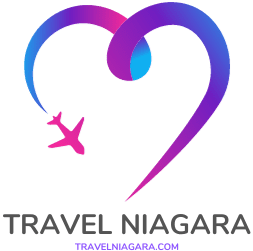Introduction
Public transportation plays a crucial role in the development and sustainability of a city. It not only provides an efficient mode of transportation for residents and visitors, but also reduces traffic congestion and carbon emissions. However, many cities still struggle with providing a reliable and convenient public transport system. Niagara Falls is no exception. In this article, we will explore the current state of public transportation in Niagara Falls and discuss potential improvements that can unlock its true potential.
I. Current State of Public Transport in Niagara Falls
Niagara Falls, known for its stunning natural beauty and tourism industry, attracts millions of visitors each year. However, it faces several challenges when it comes to providing efficient public transportation options for both residents and tourists. Currently, the city relies mainly on buses operated by Niagara Falls Transit, which serves the local area and connects to neighboring cities.
1. Insufficient Routes and Coverage
One of the major limitations of the current public transport system in Niagara Falls is the lack of sufficient routes and coverage. The existing bus routes primarily cater to the downtown area and tourist attractions, often neglecting the needs of residents in the suburban areas. This limited coverage makes it difficult for residents to access essential services and job opportunities, especially those without access to private vehicles.
2. Inadequate Frequency and Reliability
Another issue plaguing public transportation in Niagara Falls is the inadequate frequency and reliability of bus services. Buses often suffer from delays due to traffic congestion, resulting in longer waiting times for passengers. Furthermore, the limited frequency of bus services during off-peak hours makes it challenging for individuals who rely on public transport for their daily commute.
3. Lack of Integration and Accessibility
The integration and accessibility of public transport also pose significant challenges in Niagara Falls. Currently, there is a lack of seamless integration between different modes of transportation, such as buses, trains, and taxis. This lack of coordination hampers the overall efficiency of the public transport system and discourages ridership. Additionally, certain bus stops and stations are not easily accessible for individuals with disabilities, further limiting the inclusivity of public transportation in the city.
II. Unlocking the Potential: Potential Improvements
To unlock the full potential of public transport in Niagara Falls, several improvements need to be considered. These improvements include technological advancements, route expansions, integration with other modes of transportation, and enhanced accessibility.
1. Technological Advancements: Implementing a Smart Transit System
By implementing a smart transit system, Niagara Falls can overcome the challenges of limited routes, frequency, and reliability. This system would leverage GPS technology to track and monitor buses in real-time, providing accurate arrival times to passengers. Passengers can access this information through mobile applications or digital displays at bus stops. Additionally, smart transit systems can provide data to optimize route planning, ensuring more efficient service to areas with high demand.
2. Route Expansions: Catering to Suburban Areas and Tourist Attractions
Expanding bus routes to cater to suburban areas and popular tourist attractions is essential for a comprehensive public transport system in Niagara Falls. By identifying areas with high demand and significant population density, new routes can be established to provide easier access to essential services, educational institutions, and employment hubs. Similarly, creating routes that connect major tourist attractions would alleviate congestion and encourage visitors to rely on public transport rather than private vehicles.
3. Integration with Other Modes of Transportation: Building a Multi-Modal System
To enhance the overall efficiency and convenience of public transportation, Niagara Falls should focus on establishing seamless integration between different modes of transportation. This includes coordination between buses, commuter trains, taxis, and ride-sharing services. By creating a unified payment system and ensuring smooth transfers, passengers can easily switch between different modes of transport, reducing travel times and providing a more enjoyable experience.
4. Enhanced Accessibility: Catering to All Individuals
Improving the accessibility of public transport is crucial for Niagara Falls to be an inclusive city. This involves making bus stops and stations more accessible for individuals with disabilities, integrating audio and visual announcements on buses, and providing accessible ticketing options. By prioritizing accessibility, the city can ensure that public transportation is available to everyone, regardless of their physical abilities.
III. Conclusion
Unlocking the potential of public transport in Niagara Falls requires a comprehensive and holistic approach. By addressing the current limitations, including insufficient routes and coverage, inadequate frequency and reliability, lack of integration, and accessibility, the city can create a public transport system that caters to the needs of residents and visitors. Implementing technological advancements, expanding routes, integrating different modes of transportation, and enhancing accessibility will pave the way for a more efficient and sustainable public transport system in Niagara Falls. With these improvements in place, the city can maximize its potential, reducing traffic congestion, improving air quality, and providing a reliable and convenient transportation option for all.

